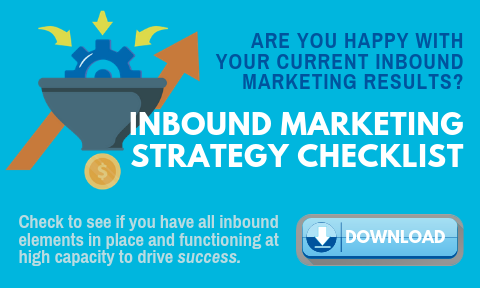
When it comes to inbound marketing, I’ve been a part of this scenario multiple times: Your company’s top brass is enthusiastic about the new initiative to the point where it seems like it’s going to become a permanent part of your marketing strategy.
Then, it becomes clear just how much work is involved, the person in charge gets overwhelmed, and the inbound strategy becomes about as relevant to your team as Crystal Pepsi is to most of America. It’s dead in the water after that.
Of course, that’s not to say inbound marketing necessarily needs to eclipse the rest of your marketing responsibilities. Rather, whoever’s in charge of your inbound marketing strategy probably already had a full-time job’s worth of responsibilities they were already handling. Adding the hours of work that go into building out that strategy on their own, without the help of an agency like LeadG2, was too much for them to handle.
In that sense, ruining your inbound marketing plan doesn’t come down to assigning it to the wrong person. Rather, it can come down to giving it to just ONE person, especially when that person doesn’t have a plan or know where to start.
Inbound marketing takes a village to do right.
Treat Your Inbound Marketing Plan with the Same Scrutiny You Give Your Outbound Marketing Plans
The biggest mistake you can make when adding inbound marketing to your mix is not being thorough with planning implementation.
Those of us who have been in the marketing game for a while and have done traditional campaigns know just how many hours go into developing collateral—the hours that you put into making sure every ad, every brochure, and every commercial is absolutely perfect.
I’m the same way. I’ve spent untold hours with an Adobe InDesign file zoomed in at 400%, trying to get the alignment just right on materials that were going to print. Heaven knows I’ve got a few gray hairs to prove it.
The reason we’ve all slaved over those traditional marketing materials is because they’re the face of our brand, the public representation of our company, and the way we attract customers. In that sense, your inbound marketing strategy deserves the same level of scrutiny—because, in the age of the internet, it serves the same purpose.
Inbound Marketing Tasks: A Breakdown
Even if you decide to work with an inbound marketing agency, the process still adds a lot of work to your marketer’s plate when they’re already busy. To name just a few of the tasks they’re being saddled with, they’ll have to:
-
Select topics for blog posts, articles, or website pages
-
Read and approve the copy and select appropriate images to go with it
-
Upload the content into your CMS of choice
-
Choose and build calls-to-action that will compel your website visitors to convert into leads
-
Write and design targeted emails for different segments of your audience
-
Engage with leads and know when to hand them off to sales
-
Set automation in place to potentially nurture leads for them
-
Create forms that can be embedded in your website
-
Gather and analyze data on a monthly basis
That isn’t an exhaustive list, and it doesn’t even include the critical strategic decisions you’ll have to make along the way.
Pretty soon, the same executives who were enthused about the inbound marketing initiative are letting these duties fall further and further to the back burner or sometimes even delegating them to someone else that has the time to handle them. The question then becomes not whether they have the time but if they have the authority, talent, and skill to make the ship run.
What to Delegate and Not to Delegate with Inbound Marketing
There are ways to split up the work with inbound marketing that keep the workload from being too overwhelming for just one person. A good rule of thumb is to break up the blogging responsibilities into three roles: the publisher, the manager, and the assistant.
The Inbound Marketing Publisher
Much like the captain of a ship or the field marshal in a military regiment, this is one role that should never be delegated. The publisher is the executive or director who oversees the broader inbound marketing strategy. This person should have seniority in your company and be capable and enthusiastic about shifting your marketing strategy to include the inbound methodology.
In turn, this person should also possess some inbound marketing expertise and, revisiting the captain analogy, set the course for the strategy and help your company maintain it for the long term. However, they shouldn’t be involved in daily tasks, such as uploading blogs or placing content.
The Inbound Marketing Manager
This role can be delegated, but oftentimes is the same person as the publisher. This is especially true in smaller organizations where the marketing team might be wearing multiple hats. As long as this person can handle both being able to handle the high-level strategic view of the publisher while still maintaining their managerial duties, this can be done without too much friction.
On a day-to-day basis, the manager is the person who will make your inbound marketing strategy flourish, including developing and executing a content strategy, analyzing reports, writing compelling email copy, and most of the other tasks listed above. This is someone who needs to have a lethal balance of creativity, good judgment, and decision-making prowess, along with project management skills and the ability to self-start.
The Inbound Marketing Assistant
If ever there was a role that should be delegated, it’s this. Most often, the inbound marketing assistant will be the one executing tasks relating to the technical end of the strategy. These day-to-day tasks frequently include uploading blog posts, publishing social media posts, and creating landing pages for visitors to convert to your website.
In this particular case, it’s an advantage to have someone tech-savvy and eager to dive into the software if need be. They’ll naturally end up familiar with your CMS, and they might even know how to modify a bit of HTML code if they need to and know how to implement a good meta description. Ultimately, this person might have several different skill sets to help drive your inbound marketing strategy.
Where it Can All Go Wrong
One of the easiest and most common mistakes we see marketing departments make is giving the role of an inbound marketing manager to someone more suited to be an inbound marketing assistant. Often, this is a ploy to save money. Just as often, it doesn’t work.
While it’s important to have someone who can handle the more technical sides of your inbound strategy, that person might not necessarily have the decision-making prowess that an inbound marketing manager would have, or they might lack good judgment on how the day-to-day strategy will affect the long-term results.
Whatever the case, unless you want to do the equivalent of taking a stack of money and lighting it on fire, none of these duties should fall onto the shoulders of just one person in your marketing department. Splitting up the workload of your team will keep your inbound marketing plan alive and thriving for years to come.
*Editor's Note: This blog has been updated from its original publish date.
.png)









Leave a Comment